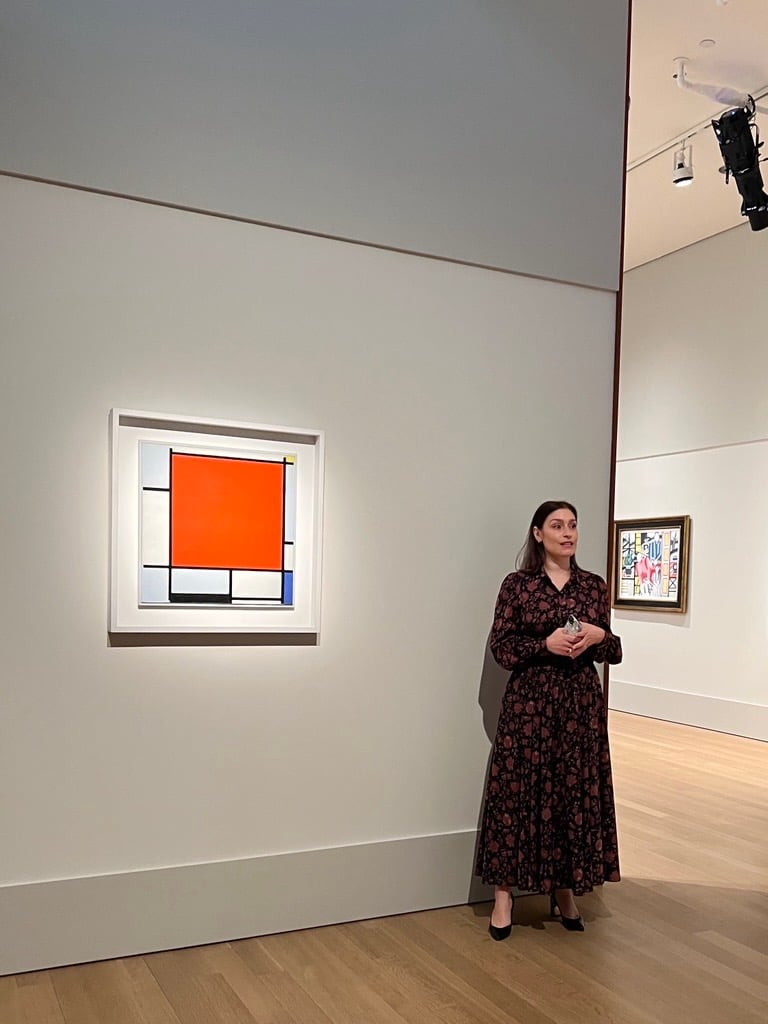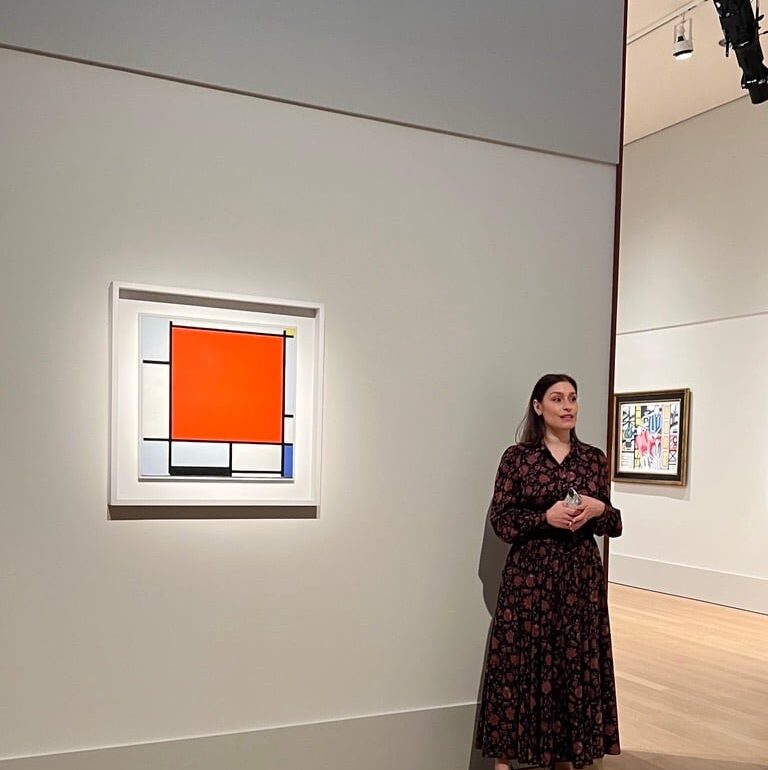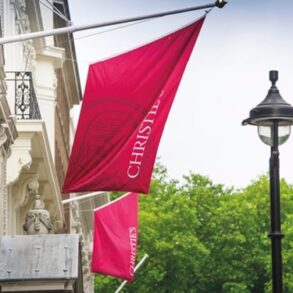A 1922 painting by Piet Mondrian sold tonight at Christie’s in New York for $47.6 million, just short of the Dutch modernist’s auction record.
Composition with Large Red Plane, Bluish Gray, Yellow, Black and Blue, the crown jewel of the “Leonard & Louise Riggio: Collected Works” sale, had been estimated at more than $50 million.
The Dutch painter’s nominal record has stood at $51 million since Sotheby’s sale of Composition No. II (1930) in 2022; that’s around $54.8 million, adjusted for inflation. In 2015, Composition No. III, with Red, Blue, Yellow, and Black (1929) fetched $50.6 million at Christie’s, which is about $68 million with inflation.
The hammer price this evening would have had to clear $44.3 million in order for the record to be reset, with Christie’s buyer’s premium structure. Instead, it stalled at $41 million, selling to its lone bidder, presumably its guarantor, who was on the phone with Alex Rotter, the newly named global president at Christie’s. There was no action in the room.
The founder of Barnes and Noble and the longtime chairman of the Dia Art Foundation, Riggio died last year at 83, leaving behind a formidable art trove. The largest single collection of the season, it comprises 39 works and is estimated at $252 million to $326 million.

Piet Mondrian’s Composition with Large Red Plane, Bluish Gray, Yellow, Black and Blue (1922). Photo: Katya Kazakina
Riggio’s Mondrian appeared at auction in 1992, when it went for $2.58 million at Christie’s ($5.91 million, with inflation), according to the Artnet Price Database. At the time, the estimate was $1.8 million to $2.5 million. The work changed hands after that and was acquired by the Barnes and Noble founder in 2000.
“It’s a fantastic picture,” said Hugo Nathan, of the New York and London art advisory Beaumont Nathan, before the sale. “But the market at those very high levels is quite tricky.”
Christie’s offered the Riggio estate an undisclosed guarantee to win the collection and sold off about two-thirds of the lots to investors through irrevocable bids, to offset its risk. The Mondrian had been guaranteed by a third-party, according to Christie’s, which meant that it was certain to sell.
Living in Paris after World War I, Mondrian pioneered a strain of abstraction that he dubbed Neo-Plasticism.
“The task today, then, is to create a direct expression of beauty—clear and as far as possible ‘universal,’” he wrote. “It will be a purely plastic beauty, that is, beauty expressed exclusively through lines, planes or volumes and through color—a beauty without natural form and without representation. It is purely abstract art.”
Read the full report from tonight’s marquee sales at Christie’s.
This post was originally published on this site be sure to check out more of their content






